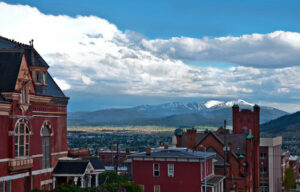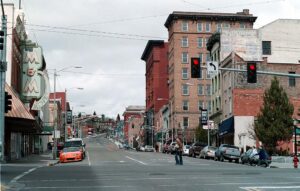
What is Cost of Living?
When moving your life and business, the cost of living in your desired destination usually comes up in the conversation. Cost of living is a measurement of the basic goods and services a person can buy — like food, shelter, transportation, healthcare, etc. — in different cities with a given amount of money, meant to represent income. Though challenging to accurately calculate, cost of living attempts to illustrate just how far your dollar goes in any given area.
The Mining City vs. the Rainy City
Large cities tend to have a higher cost of living; because the primary component in measuring cost of living is often the cost of housing, areas with dense populations (where housing is in high demand) charge more for housing to satisfy basic supply-and-demand principles.
This is especially true in Seattle, Washington, one of the largest cities in the region — approximately a 9-hour drive from our location in Butte, Montana. Seattle has experienced a notable surge in cost of living within the last several years and, although the metropolitan minimum wage is one of the highest in the country and average income continues to rise, housing prices are increasing at an unmatchable rate. In November 2016, the average rent consumed 42.7% of a month’s pay, despite an increase in the average household income.
Using the lowest estimate for median income and highest for monthly rent in calculations, the average rent in Butte consumed 23.4% of a month’s pay — almost half the rate experienced in Seattle in the same period.
Increases in living costs often reflect positive developments at a city level, but it can be difficult to justify moving a business into such conditions — especially when there are areas with rates perhaps more suitable for your budget. An additional consideration to make when evaluating different cities to take up residency is the state sales tax provisions. Washington boasts a 6.5% base sales tax rate — in Seattle, it’s 10.10%. Compared to states that enforce no sales tax like Montana, a 10.10% tax on everyday purchases can take a significant portion of overall earnings.

To put these figures further in perspective, we can compare the price of a dozen of eggs: according to data collected by Expatistan, 12 eggs in Seattle cost on average $3.78; in Butte, 12 eggs cost $2.53. The chart above features other differences in pricing that, though seemingly small, add up significantly over time.
To consider both sides equally, those living in urban areas like Seattle usually enjoy access to a fuller range of resources. However, with a lengthy interstate system that leads directly to metropolitan cities in Washington like Spokane and Seattle, residents of Butte can profit from the resources of larger western cities in less than a day by car. Gas prices in Montana are also lower on average than those in Washington, making the trip and transportation costs in general even more economically responsible. And, of course, Butte offers less traffic and shorter commutes on a daily basis than Seattle does, ensuring a more efficient use of your time.
A Great Deal in Butte
Ultimately, location is an important decision unique to each individual business. If you’re looking for a spot to settle in the West, Butte is a great option; business owners who decide to put down roots in Butte — or more specifically, in the Montana Connections Business Development Park — benefit from a dollar that stretches farther than it would in a large city like Seattle. And we think that’s pretty great.
Something about cost of living still unclear? Here’s a video demonstrating the concept in New York City:




